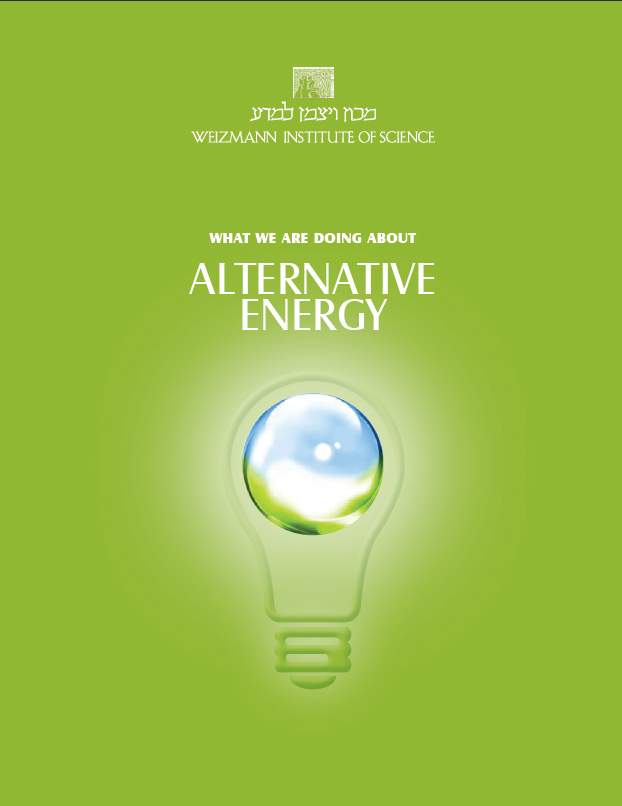A number of Weizmann scientists are working to break new ground for novel types of solar cells, hoping to make them more cost-effective, either through improved efficiency or by making them simpler and cheaper. ”At present, it seems unlikely that we will end up with one solution; rather with a number of different types of solar cells for different purposes,” says Prof. Gary Hodes of the Materials and Interfaces Department. Hodes’s research, part of which is done in collaboration with colleagues at the Institute, runs in two related directions: researching new methods for manufacturing cheap solar panels by depositing solutions of light-collecting material on a surface; and creating new photovoltaic materials.
Profs. Igor Lubomirsky and David Cahen of the same department and Drs. Akiba Segal and Ayelet Vilan of Chemical Research Support are attacking the cost-efficiency problem from another angle. Sunlight comes in a wide range of colors, but solar cell materials work most efficiently with a limited variety of colors. Very expensive solar cells can minimize loss by letting the light pass through several layers, each attuned to a different color. The Weizmann scientists took an old, but at the time expensive idea: with a special mirror, they split sunlight into two different color ranges – and deflected each to a separate solar cell attuned to that color range. Their innovation was that they discovered how to use very cheap mirrors effectively. Their experiments have already shown that an ultra-cheap mirror can significantly increase the total efficiency of the solar collection system – well above that of the best cell presently available.
Cahen and his group are also putting their expertise in molecular electronics to use exploring potential new types of solar cells. Their work and Hodes’s represent a few first steps toward one holy grail of solar energy research: solar paint.
Prof. David Cahen’s research is supported by the Nancy and Stephen Grand Research Center for Sensors and Security; Mr. Yehuda Bronicki, Israel; and Mr. and Mrs. Yossie Hollander, Israel. Prof. Cahen is the incumbent of the Rowland and Sylvia Schaefer Professorial Chair in Energy Research.
Profs. Igor Lubomirsky and David Cahen of the same department and Drs. Akiba Segal and Ayelet Vilan of Chemical Research Support are attacking the cost-efficiency problem from another angle. Sunlight comes in a wide range of colors, but solar cell materials work most efficiently with a limited variety of colors. Very expensive solar cells can minimize loss by letting the light pass through several layers, each attuned to a different color. The Weizmann scientists took an old, but at the time expensive idea: with a special mirror, they split sunlight into two different color ranges – and deflected each to a separate solar cell attuned to that color range. Their innovation was that they discovered how to use very cheap mirrors effectively. Their experiments have already shown that an ultra-cheap mirror can significantly increase the total efficiency of the solar collection system – well above that of the best cell presently available.
Cahen and his group are also putting their expertise in molecular electronics to use exploring potential new types of solar cells. Their work and Hodes’s represent a few first steps toward one holy grail of solar energy research: solar paint.
Prof. David Cahen’s research is supported by the Nancy and Stephen Grand Research Center for Sensors and Security; Mr. Yehuda Bronicki, Israel; and Mr. and Mrs. Yossie Hollander, Israel. Prof. Cahen is the incumbent of the Rowland and Sylvia Schaefer Professorial Chair in Energy Research.
Prof. Gary Hodes’s research is supported by the Helen and Martin Kimmel Center for Nanoscale Science.
Prof. Igor Lubomirsky’s research is supported by Mr. and Mrs. Yossie Hollander, Israel






















